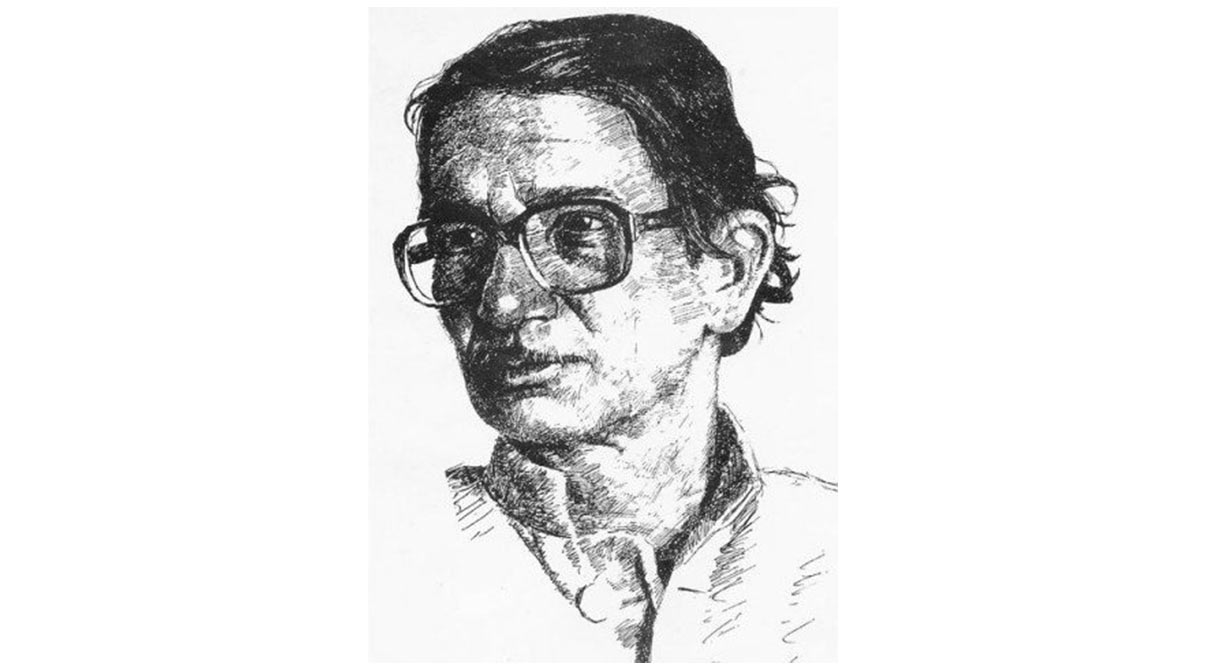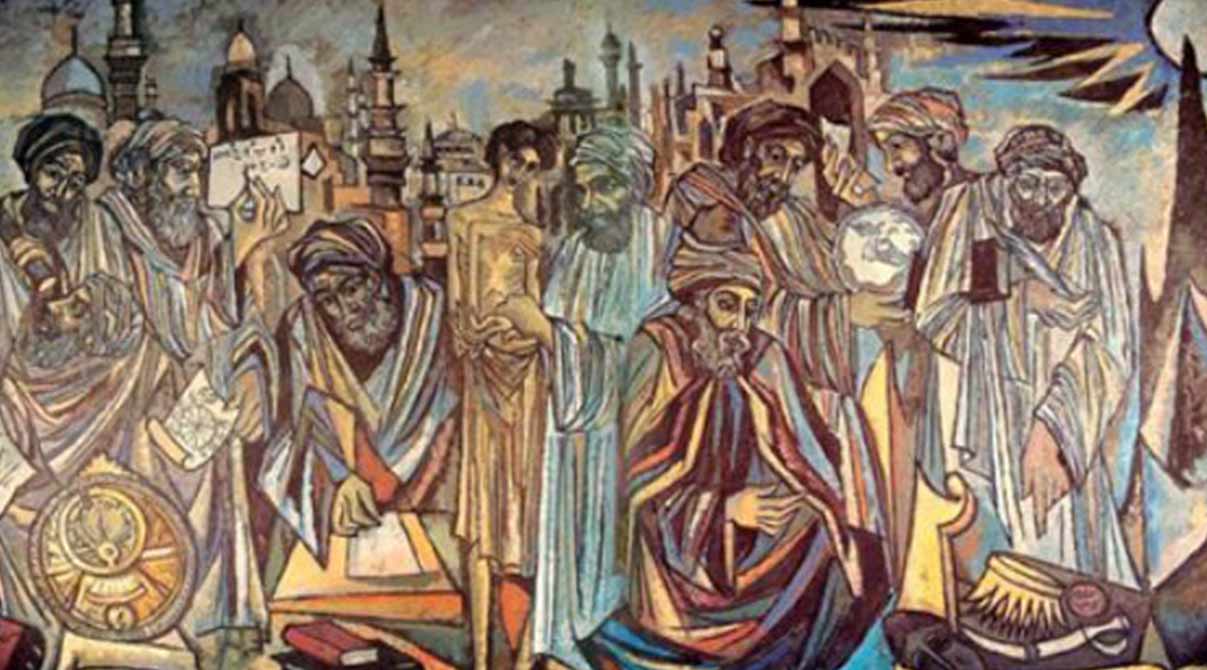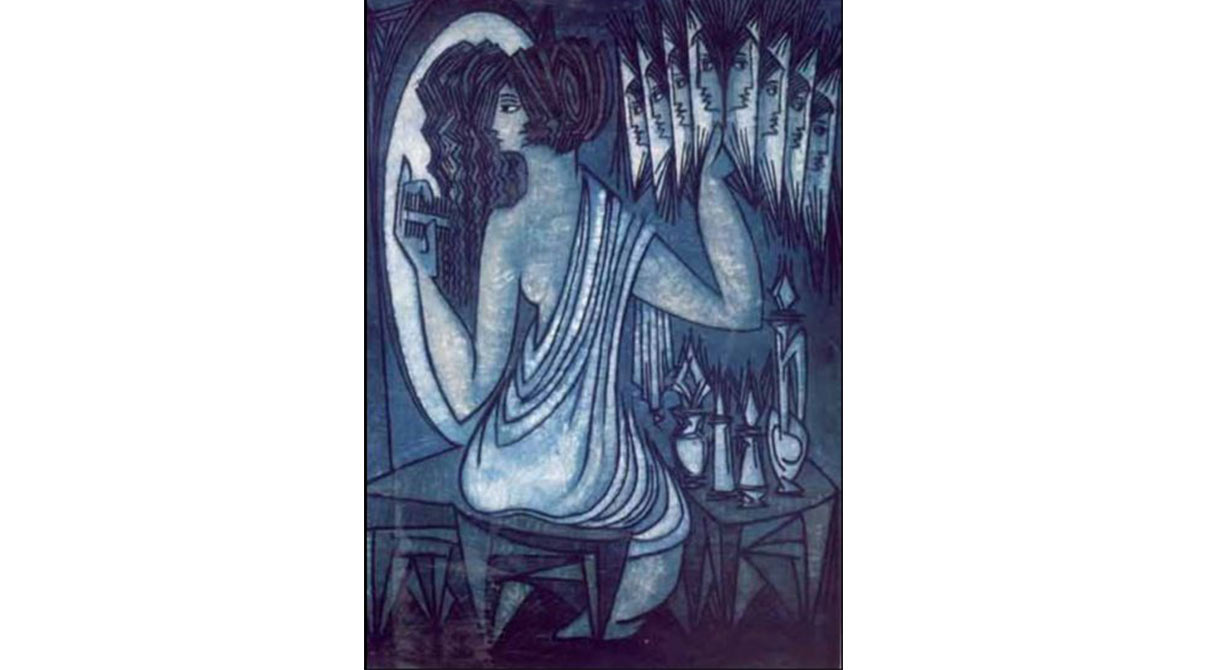Who was Syed Sadequain?
Syed Sadequain Ahmed Naqvi was a legendary Pakistani painter and a calligrapher who is one of the most renowned and outstanding artists of the 20th century. He was born in 1930 in Amroha, India and died in 1987 in Karachi. The Sakhi Hassan Cemetery in Karachi is the resting place of Sadequain. Even though he had no formal training in art, Sadequain’s work reflects his deep understanding of the art of calligraphy. He is famous for his unique style which incorporates elements from both Eastern and Western art styles.
Syed Sadequain is one of the most celebrated painters of the 20th century. And his work is considered some of the best in the world. Sadequain is well-known for his unique style and incredible talent for painting. Sadequain is notably one of the most important painters of Pakistan, and several museums all over the world exhibited his work.
He was a prolific artist, producing an estimated 10,000 works in his lifetime. Art lovers from around the world praise his work. His work is highly sought-after by collectors. And many of his pieces auctioned for high prices. Sadequain is one of the highly respectable Pakistani artists of all time. His murals and poetry are also extremely popular amongst his admirers.
He has received numerous awards for his exemplary work and outstanding achievements, such as Tamgha e Imtiaz from Pakistan’s government in 1960, Biennale de Paris Award From the French Government in 1961, Pride of Performance by the President of Pakistan in 1962, the Cultural Award from the Government of Australia in 1975, and Sitara e Imtiaz from the Government of Pakistan in 1980.
Read More: Pakistani Writers That Left Us in the Year 2015
Syed Sadequain’s Most Popular Works
Syed Sadequain has produced a number of unique and amazing artworks and it is extremely difficult to list out a few best works, as every piece he created was enough to put any artwork in awe. However, taking up this extremely challenging task, we have listed some of Sadequain’s most popular and best works.
Treasures of Time by Syed Sadequain
This mural illustrates human scientific development from Socrates to Einstein and Muhammed Iqbal.
Syed Sadequain painted “Treasures of Time,” the State Bank of Pakistan’s Karachi library’s first substantial mural (65 feet by 10 feet), in 1961. In the mural, Sadequain depicted images of philosophers, scholars, mathematicians, scientists, writers, and poets, spanning from Socrates to Allama lqbal and Einstein, to demonstrate the historical advancement of humanity, knowledge, and civilization.
By depicting Ibn-i-Zakaria, Rumi, Al-Idrisi, Hafiz and Ibn-i-Khaldun, Al-Beruni, Omar Khayyam, Ibn-i-Rushd, and Al-Khawarizmi, the painting also showcases the greatest Islamic intellectuals. The scientific apparatus, navigational tools, and architectural structures elaborate the represented personalities’ identities and intelligence.
Industry and Agriculture – I
This mural, like the others Sadequain painted for the State Bank of Pakistan, features themes of industry and agriculture. He painted it in 1965 for the bank’s entry public lobby, close to the entrance door, where many people entering the hall would see it. He nicely depicted the agricultural fields on the right, and showed the industrial process on the left. The man and woman in the center are displaying their accomplishments. The man is the natural bearer of industrial output, while the woman bears the fruits of the ground. The artist’s distinctive body of work is something the bank is happy to own.
The Laboratory of Natural Universe
Syed Sadequain worked on The Laboratory of Natural Universe for three months in 1961 to decorate the State Bank headquarters’ brand-new structure at the time. Because of the artist’s meticulous process, this is clearly a labour of love. To highlight its features, he scratched the painting with a knife, which required great care and patience. It clearly shows human endeavour and the search for heavenly and terrestrial things. In order to advance human understanding, the organic bio-diversity of the earth’s environment and its ecology are both being studied. The artist’s brush and knife represent the human race’s hunger for knowledge in a lovely way.
Industry and Agriculture – II
Before he passed away in 1987, this was likely Sadequain’s last mural that he had to complete. Only the guests of the State Bank’s Peshawar office library could previously view this incredible piece of art, before its first public display later. It was carefully removed from there and transported to the SBP Museum’s Art Gallery’s collection of Sadequain’s works, and a replica was placed in its place in the Peshawar office.
This mural is particularly noteworthy since it differs slightly from Sadequain’s body of work. He has utilized lighter and more vibrant hues, with strong, healthy individuals actively engaged in industry and agriculture and pursuing knowledge of the wonders of the land and the secrets of the skies. The overall impression of this painting is one of a lightness of being that is similar to happiness and hope in human undertakings.
Saga of Labor – Mangla Dam Power House
Syed Sadequain had incredible creative strength and energy, which was a quality of his metamorphic ability and a component of the vibrancy of his art. In less than three months in 1967, Sadequain painted the 180 feet by 23 feet wall of the turbine hall of Mangla Dam. The artist’s work, titled “Saga of Labor,” depicts the age of progress and industrialization by showing a man using his muscles to break stones at the beginning and his mind to mechanize, create, and develop at the end. This mural significantly emphasizes the importance of working class and its contributions to the development and betterment of society.
Other Popular Works by Syed Sadequain
Murals and Paintings
Some other most popular murals and paintings of Sadequain include the Quest of Knowledge mural made in 1968 for the University of Punjab, the Abu Dhabi Power House mural, the Mural at Aligarh Muslim University, India, Mural made for Hamdard Research Institute of Islamic Studies, Mural at Jinnah Hospital made in 1955, Murals at Lahore Museum entrance Hall and others (100 x 35ft) made in 1973 and titled as “Evolution of Mankind”. He made his last mural in 1986 titled “Arz-o-Samawat” (heaven and earth). This mural became a popular sighting at Frere Hall, Karachi.
Syed Sadequain also made several famous illustrations of notable personalities such as the 1963 illustration of “Le Etranger” in France. There, he illustrated the Nobel prize winner Albert Camus. Moreover, he created the 1977 illustration of Mirza Ghalib, the 1985 illustration of Faiz Ahmed Faiz and lastly, and an illustration of Allama Iqbal’s lines. He titled it Aftaab-e-Taaza and now the Pakistan’s Unicorn Gallery owns it.
Moreover, a 700 paged book titled The Holy Sinner published more than 400 of Sadequain’s paintings and other artworks in 2003.
Exhibitions
Many of his paintings were displayed in popular exhibitions in Pakistan and in other countries. Some of the exhibitions were even Solo where Sadequain’s paintings where the only thing art lovers gathered for. Some popular exhibitions of syed Sadequain’s paintings include:
- 1954 – Solo Exhibition in Quetta
- 1955 – Solo Exhibition at Frere Hall and at the residence of Mr. Suhrawady
- 1963 – Several Exhibitions in USA
- 1974 – Exhibitions in the Middle East and Eastern Europe
Apart from exhibitions, a TV series titled Mojiza-e-fun was also telecasted in 1976 that showed Sadequain’s art.
Calligraphy
Syed Sadequain is best known for his calligraphic paintings and his distinctive style, which frequently combines inspirations from both the East and the West. His experimentation with calligraphy later became one of his hallmark styles. Some of the popular calligraphy paintings made by Sadequain are:
- Sadequain’s Calligraphy at Lahore Museum
- Calligraphy panel at the Metropolitan Museum of Art, 2000
- 1969 Calligraphic rendition of “Sura-e-Rehman”
Poetry 0f Syed Sadequain
Syed Sadequain had composed over 400 pieces of poetry by the time he reached 18 years of age. Evidently, this depicts his powerful grip on poetic elements and creative skill. He privately published 4 books named
- Rubaiyyat e Sadequain
- Rubaiyyat e Sadequain Naqqash which is an illustrated version comprising over 200 drawings.
- Rubaiyyat e Sadequain Khattat
- Juzw e Bosida, which was published in the 1980s and comprised of poetry from his teen years
His poetry is currently under consideration for research, particularly by Urdu Laureates and professionals. Mr. Prof. Siddiq Masih from Lahore recently published his thesis work about his Rubaiyyat for his M.Phil thesis.
Syed Sadequain is accurately characterized as an incarnation of the spirit of Picasso, the grandeur of Michelangelo, the poetic prowess of Omar Khayyam, and the calligraphic talents of Yaqoot in the book Mystic Expressions. The book is an Odyssey to Exaltation with Ghalib, Iqbal, Faiz, and Sadequain.




